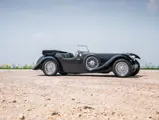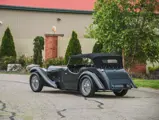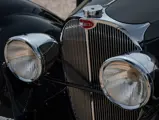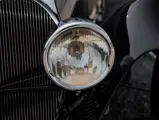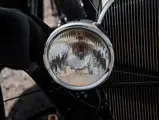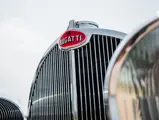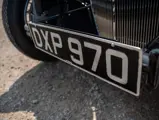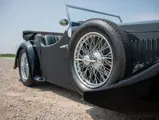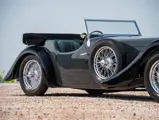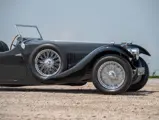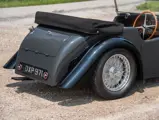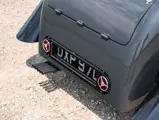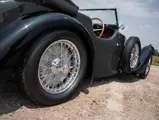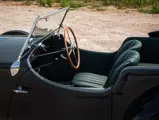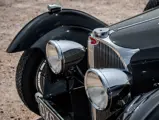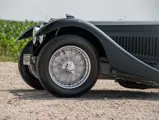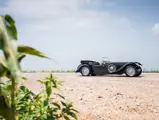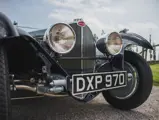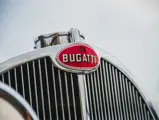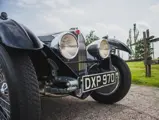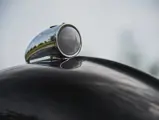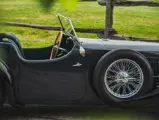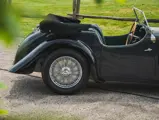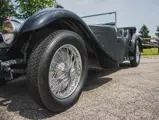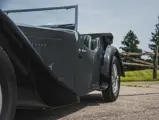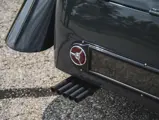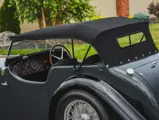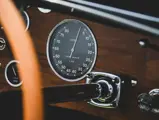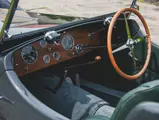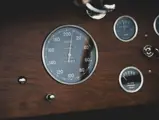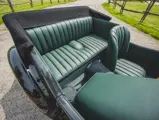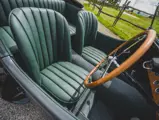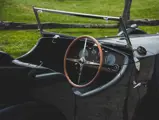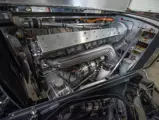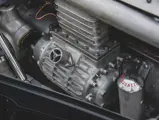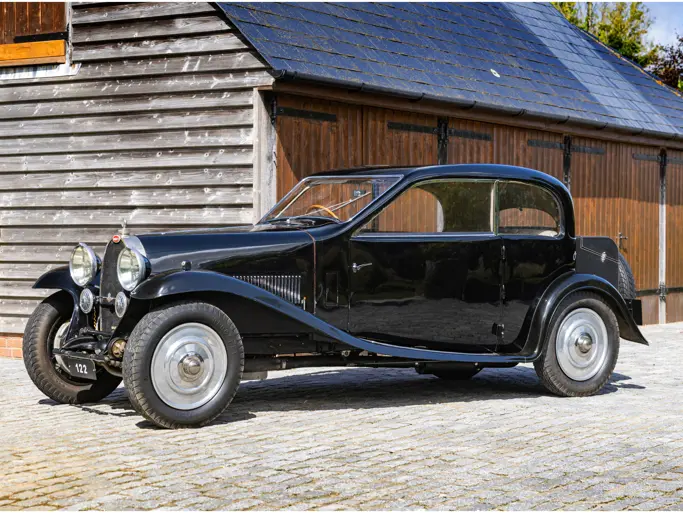
1937 Bugatti Type 57SC Tourer by Corsica
{{lr.item.text}}
$5,395,000 USD | Sold
{{bidding.lot.reserveStatusFormatted}}
- Known and fascinating ownership history; one of only two 57S chassis provided new with four-seat open tourer bodies by Corsica
- Recently emerged from a comprehensive restoration by RM Auto Restoration, with invoices totaling $700,000 and nearly 6,000 man-hours on file
- Retains its original chassis, engine, gearbox, differential, and body; upgraded circa 1946 with supercharger
- Delivered new to Maurice Fox-Pitt Lubbock, future Vice-Chairman of Rolls-Royce and a close friend to Jean Bugatti
- Thoroughly documented in Pierre-Yves Laugier, Bernhard Simon, and Julius Kruta’s respective books on the model
- The very pinnacle of pre-war motoring; a unique and distinctive specimen of Bugatti’s fastest, and most desirable model
The cars of Ettore and Jean Bugatti have always enjoyed a reputation for precision engineering and craftsmanship often, and not unjustifiably, compared to that of the finest Swiss timepieces. But no Bugatti model expressed all of the marque’s celebrated qualities so effortlessly as the elegant, luxurious, and competition-proven Type 57S.
Introduced at the Paris Auto Salon in October 1936, the 57S introduced a completely re-engineered and exceptionally sporting chassis design. A magneto-driven ignition was mated to the specially tuned 3.3-liter dual-overhead cam, inline-eight-cylinder engine, which featured a higher compression ratio of 8.5:1. When complemented by the available “C”-specification Roots-type supercharger, the 200-horsepower 57SC variant (as offered here) could be propelled to a top speed of some 120 mph, making it the fastest French production car of the period.
BUGATTI CHASSIS NUMBER 57512
Excellence in competition was, of course, only one facet of the model’s appeal; as a luxurious, high-performance road car, the 57S would benefit from some of the greatest coachbuilt designs of all time. Most bodies were supplied by French firms or Bugatti’s own Works, though British coachbuilders such as Corsica also applied their trade to the 57S. Of particular intrigue were a pair of interesting 57Ss with four-seat open tourer bodies—each being uniquely constructed to show obvious variations from the other.
The first, chassis number 57503, abruptly ends the curve of the fenders just behind the wheels, while proudly displaying the oil tank just behind the left front wing. Chassis 57512, offered here, extends the length of the fenders front and rear to gracefully hide the oil tank and visually lengthen the car for a dramatic finish to the rear profile, with carefully crafted side-mounts integrated into the extended driver’s side fender.
The chassis of 57512 was initially delivered on 8 March 1937 to Colonel Sorel at the Bugatti agency in London. After returning from Corsica’s purview, it was subsequently delivered to its first owner, Maurice Fox-Pitt Lubbock, and promptly registered as “DXP 970.” Lubbock was a close friend of Jean Bugatti, and it was perhaps due in part to Jean’s driving inspiration that he enjoyed exercising his new Bugatti at speeds in excess of 100 mph.
In 1947, Lubbock was forced to sell his prized Bugatti after being elected Vice-Chairman of Rolls-Royce. By this time, 57512 had been fitted with a factory Roots-type supercharger. Some historians, including Julius Kruta, have reported that the car was upgraded to 57SC specifications at the factory in 1939, while others, such as Pierre-Yves Laugier, suggest it may have been supercharged around 1946. At any rate, this remarkable 57S was certainly upgraded to the ultimate, supercharged specification very early in its life.
Within subsequent American ownership of Walter Stocklin, 57512 was raced at Long Island, Bridgehampton, and Watkins Glen, and by 1955 Stocklin had replaced its original Corsica tourer body with a simple two-seater racing-style body. He continued to use the car sparingly, and in 1960, he sold it (along with its original body) to the esteemed collector, Judge John North of Easton, Maryland.
Judge North decided to keep the Grand Prix-style coachwork on chassis 57512, and thusly sold the Corsica body during the mid-1960s. North later reacquired the Corsica body along with a modified Bugatti chassis and a spare 57SC engine that he assembled into a “replica” 57SC which passed to Count Hubertus von Donhoff in 1986. Twelve years later, Judge North purchased back the assembled 57SC, and famously reunited 57512 with its original body.
Briefly passing through General William Lyon’s preeminent stable, a restoration was then performed upon 57512 while it resided within The Blackhawk Collection, and they subsequently displayed it at the 2003 Pebble Beach Concours d’Elegance.
A RETURN TO GRANDEUR
In early 2021, 57512 was acquired by the consignor and immediately submitted to a comprehensive, nearly 6,000-hour restoration by RM Auto Restoration, from which it has just recently emerged and is presented today. The consignor’s commission was a rather natural choice, particularly since RM Auto Restoration had earned the third of their world-leading seven Pebble Beach Concours d’Elegance Best of Show trophies with a 2006 effort resurrecting Corsica’s most famous creation: the 1931 Daimler Double Six 50 Drophead Coupe.
A 40-page volume of highly-detailed work orders—comprising contributions from each of the shop’s specialized departments and totaling nearly $700,000—substantiate the extravagant quality, research, and execution which has been lavished upon this highly significant Bugatti.
Fortunately, upon arrival at RM Auto Restoration’s world-class facilities it was quickly determined that the passion and diligence of 57512’s past owners had saved its major mechanical components from the most troubling ravages of replacement. It has survived intact with its numbers-matching chassis, engine, gearbox, and differential; the supercharger is believed to be the same one that was installed within the first few years of its life. Of course, all these major components have been entirely rebuilt, overhauled, and bench-tested during the car’s restoration.
Chassis 57512’s original Corsica coachwork was, upon its disassembly, proven to have lived a much more difficult life than its counterpart chassis. Nonetheless, much of the original form remained in a modified or altered state—and to this end each panel, ash wood support, fastener, joint, and crease has been masterfully returned or reprofiled to their original form. Where required, exacting replacements of several components were constructed from scratch. Though the chrome wire wheels (added by Stocklin) and Roots-type supercharger have been tastefully retained, 57512 is otherwise presented today very much the same as it was delivered to Lubbock in March 1937.
The car’s distinctive suite of styling hallmarks is highlighted by a single row of elongated louvers upon the bonnet sides, a pair of oversized “Stephen Grebel” headlamps, driver’s side integrated side-mount, and elongated fenders which bring forth a hint of Bugatti’s legendary Type 41 “Royale.” Chassis 57512’s tightly nested convertible top rests closely above the green leather-trimmed cabin, which itself is suitably contrasted by a resplendent smattering of chrome-plated trim and hardware throughout.
Equal parts elegant and athletic, this Type 57SC Tourer by Corsica embodies everything a Bugatti should be, and it sits unrivaled at the very pinnacle of pre-war motoring. The remarkable restoration—from which it has just recently emerged—adds much to its already-significant appeal as a unique, distinctive, numbers-matching, and exceptionally well-documented example of Bugatti’s fastest and most desirable production model. Duly returned to grandeur, chassis 57512 would be a tremendous, much-welcomed, and long anticipated entrant to many of the world’s most esteemed exhibitions, concours, and Bugatti owners’ club events.

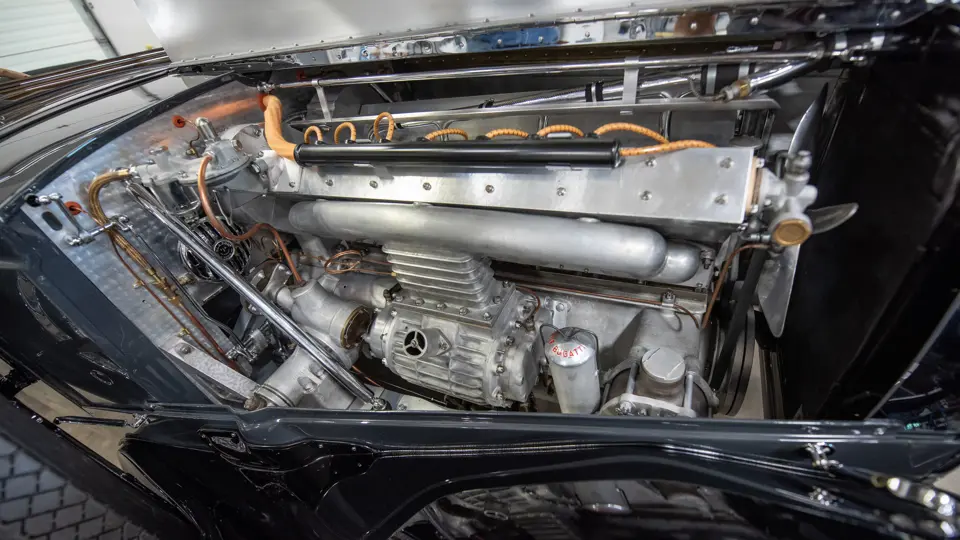


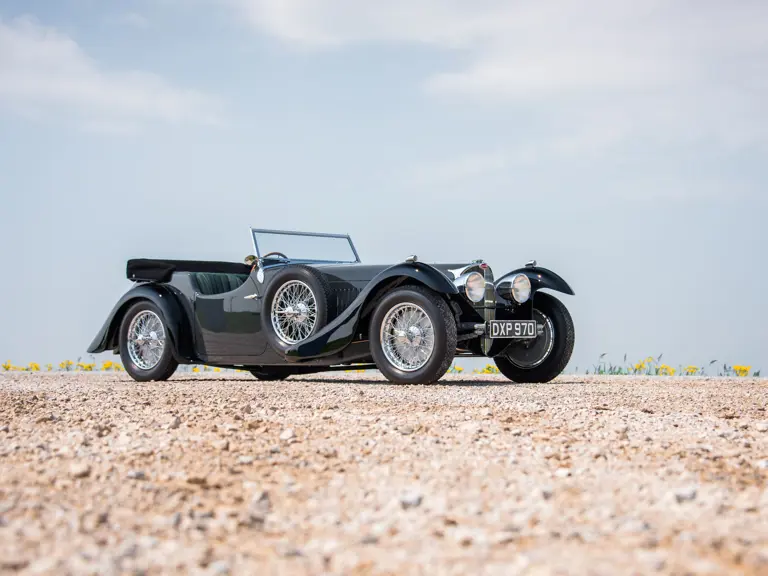



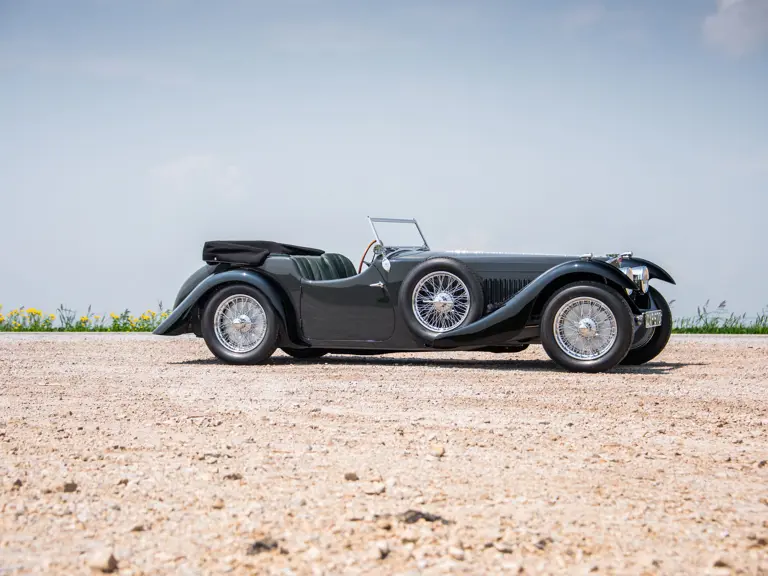
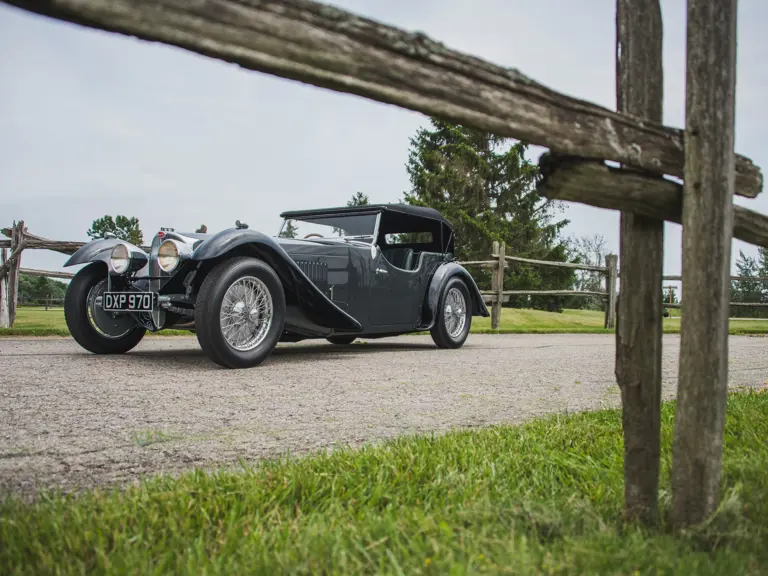

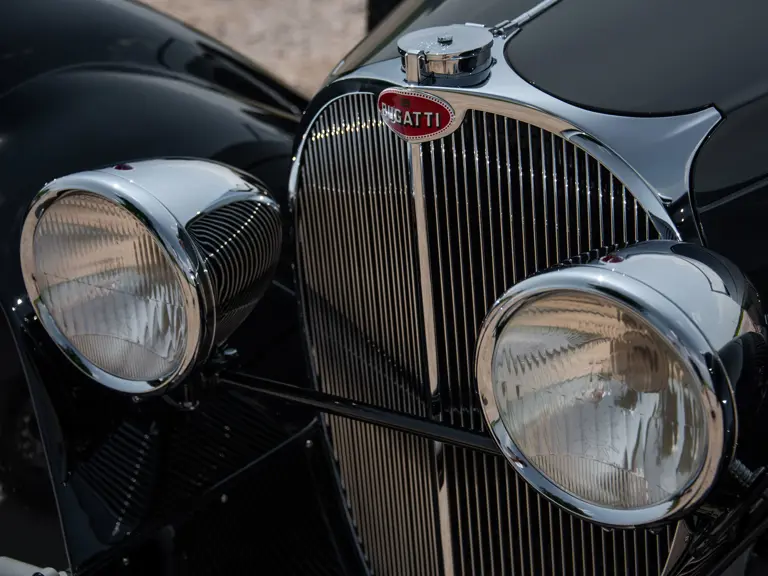
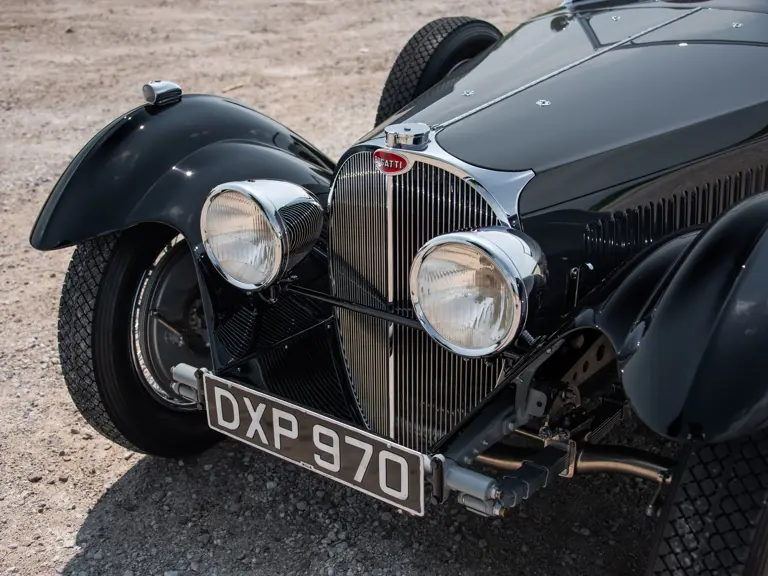

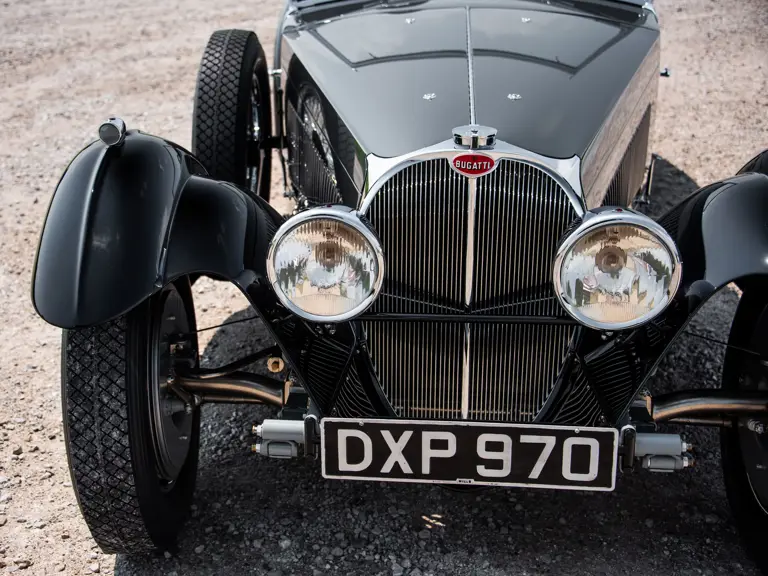
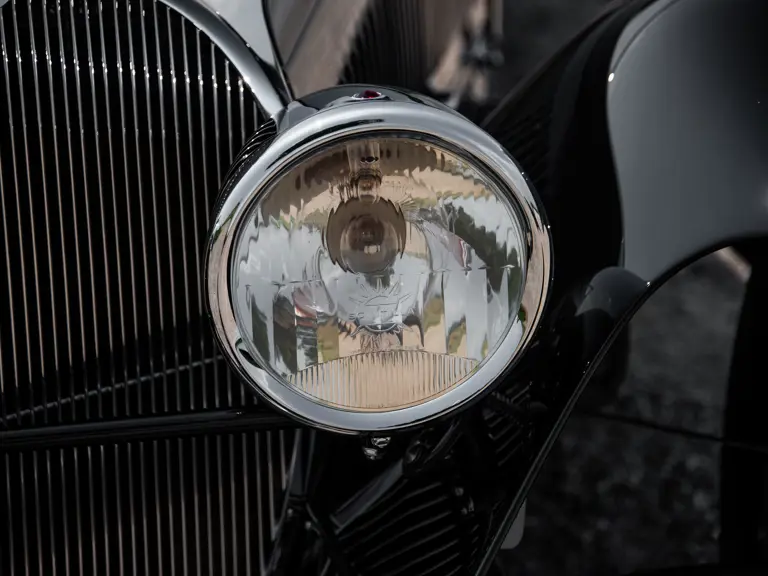
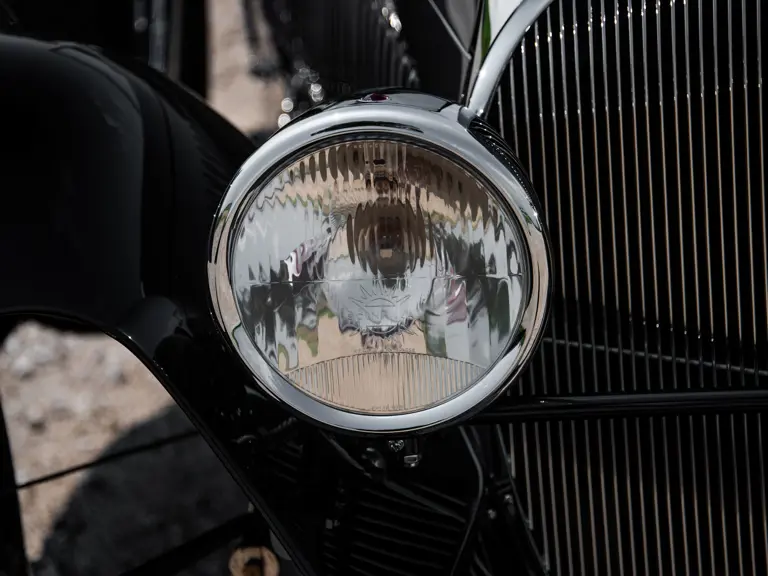
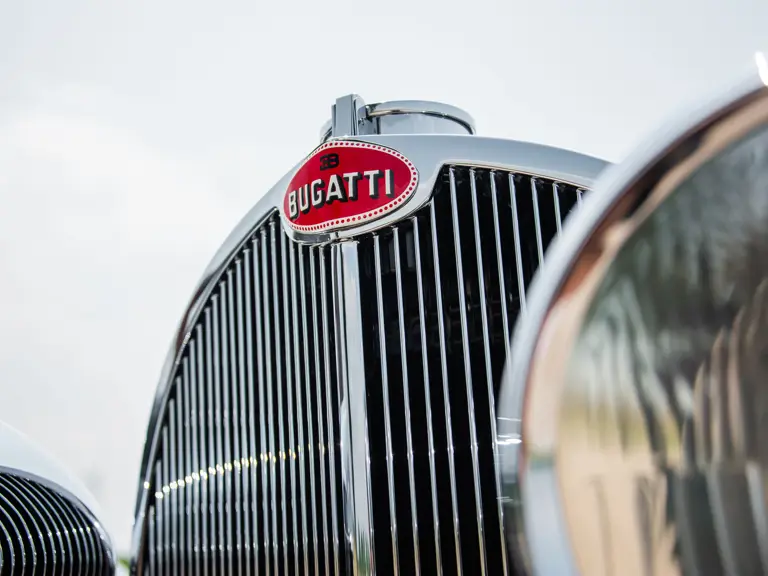

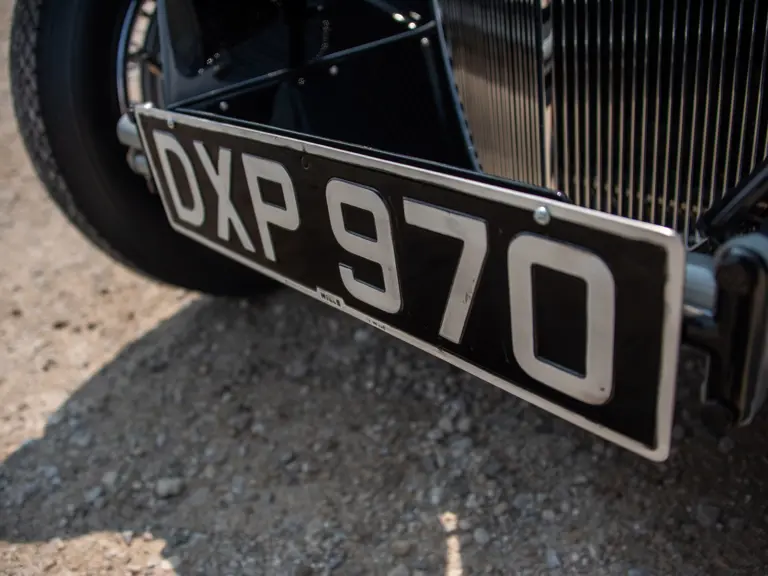
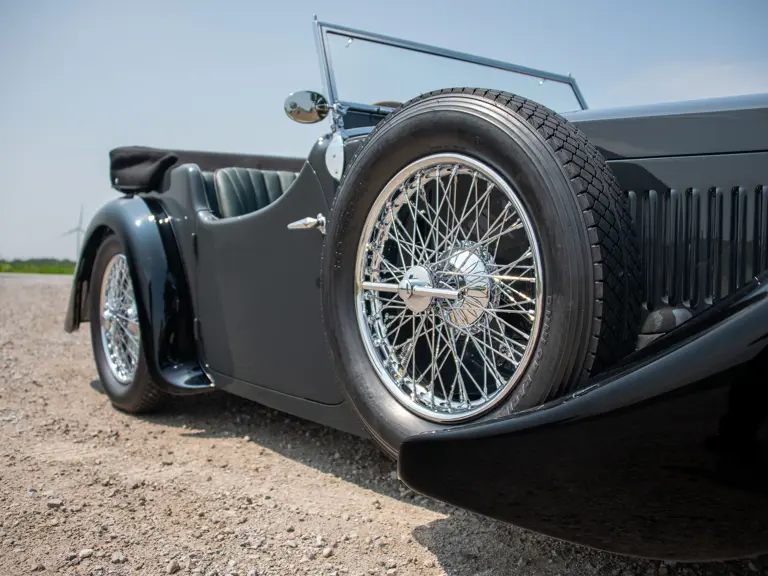
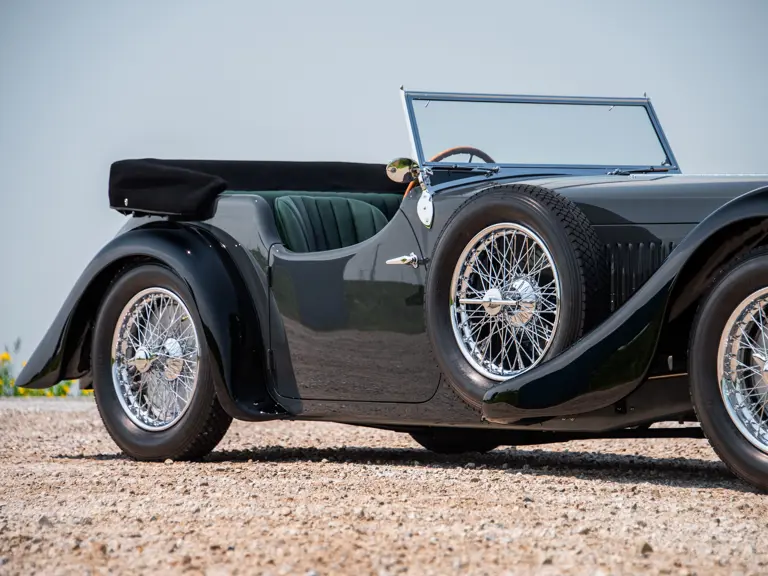

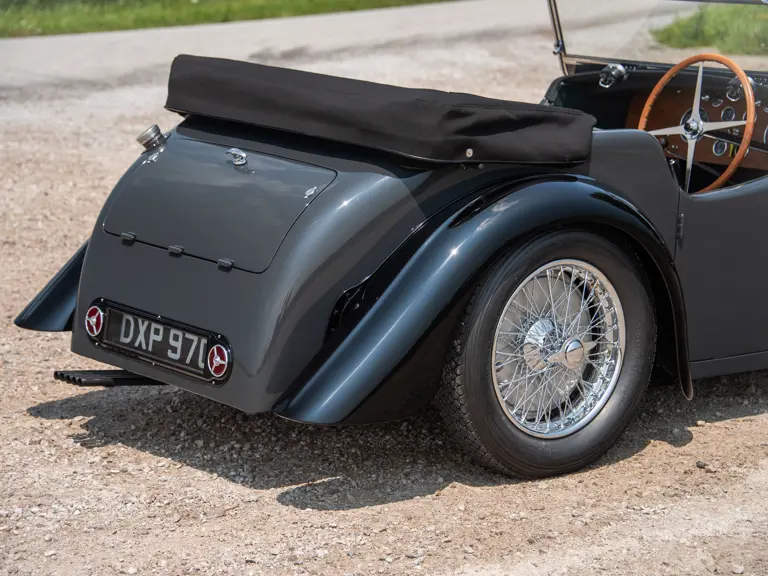
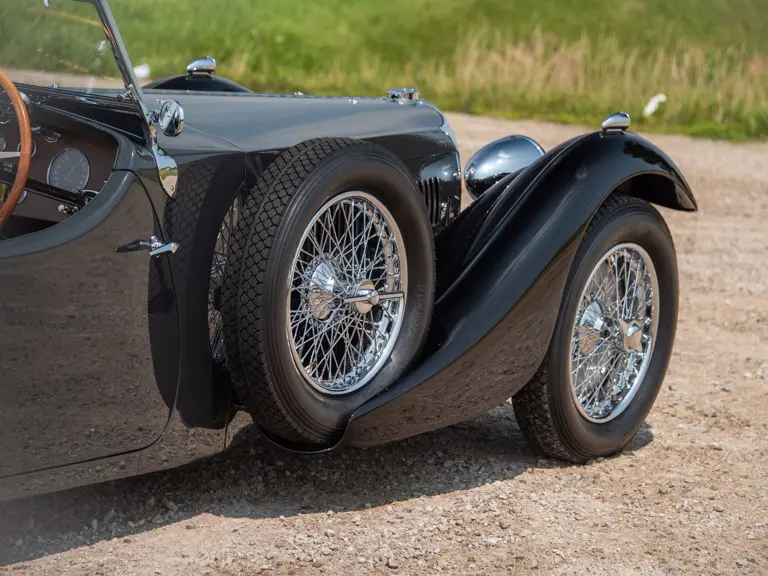




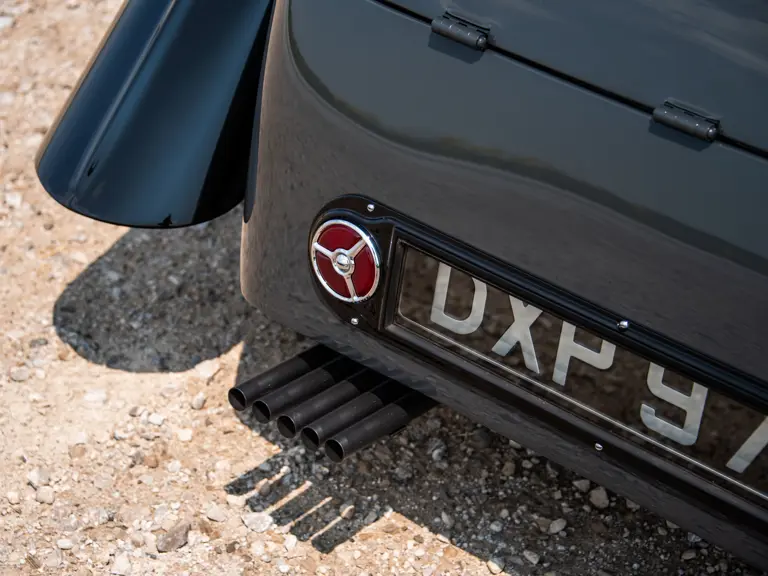
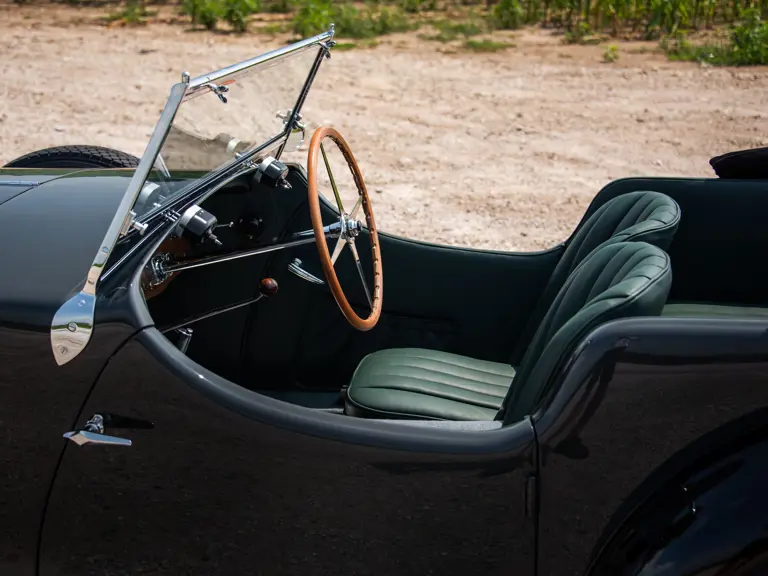
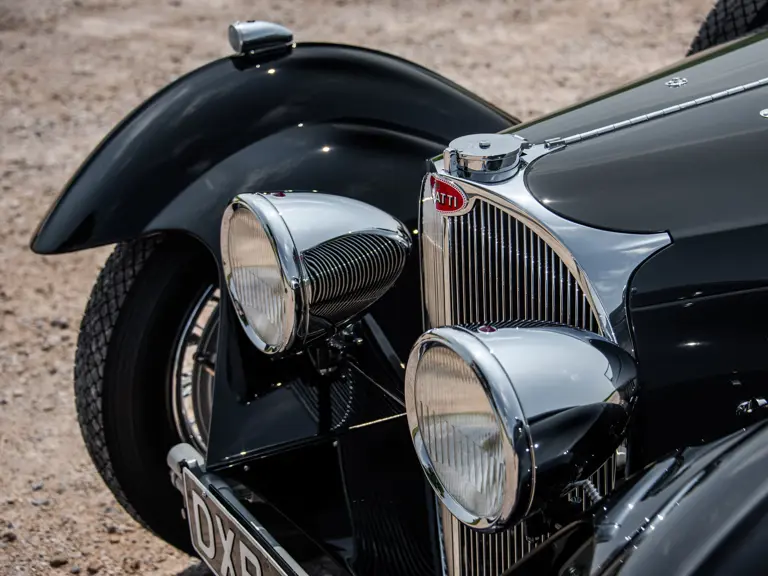
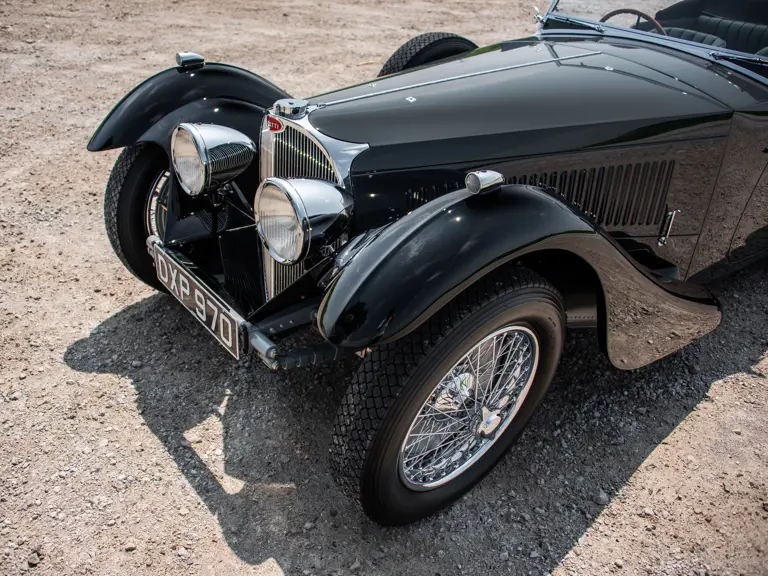
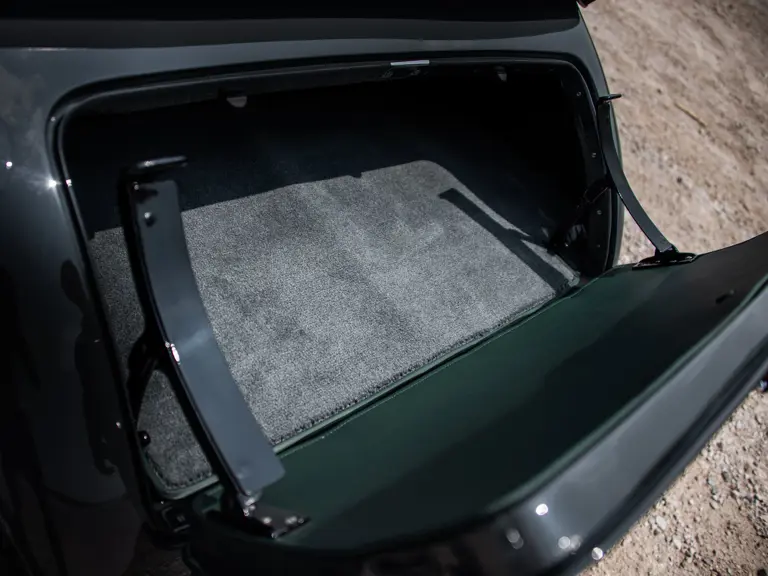
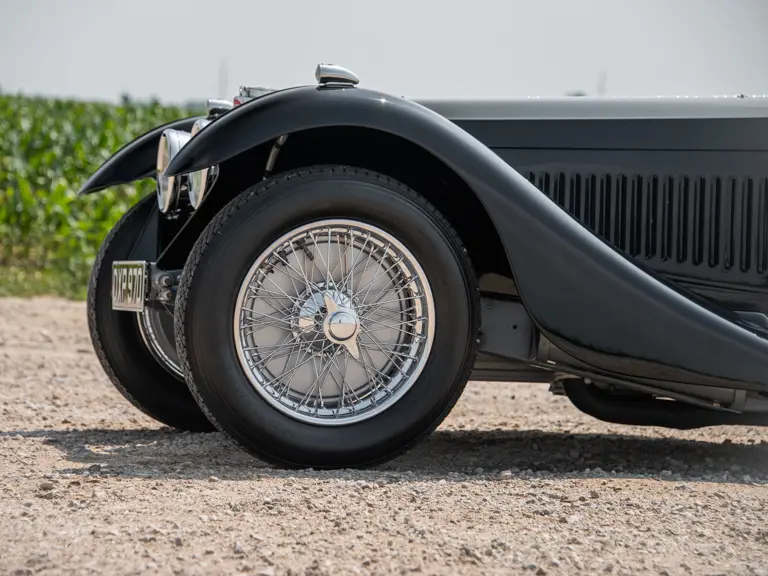


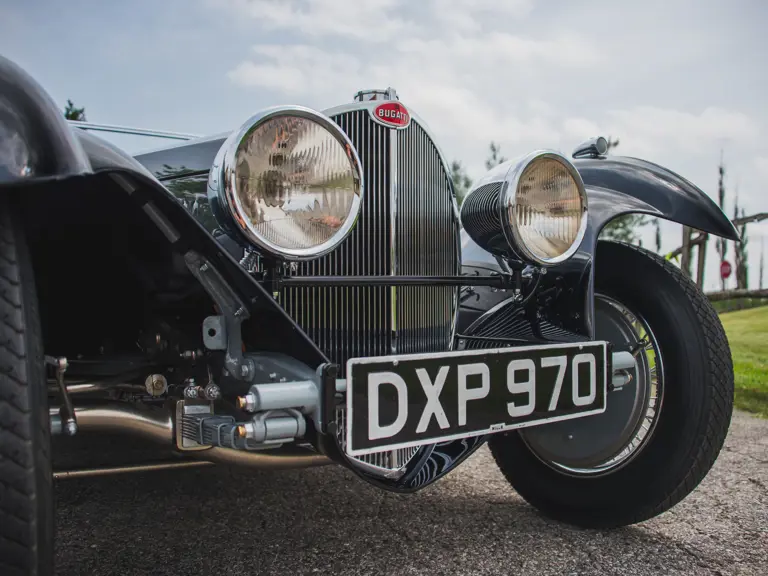
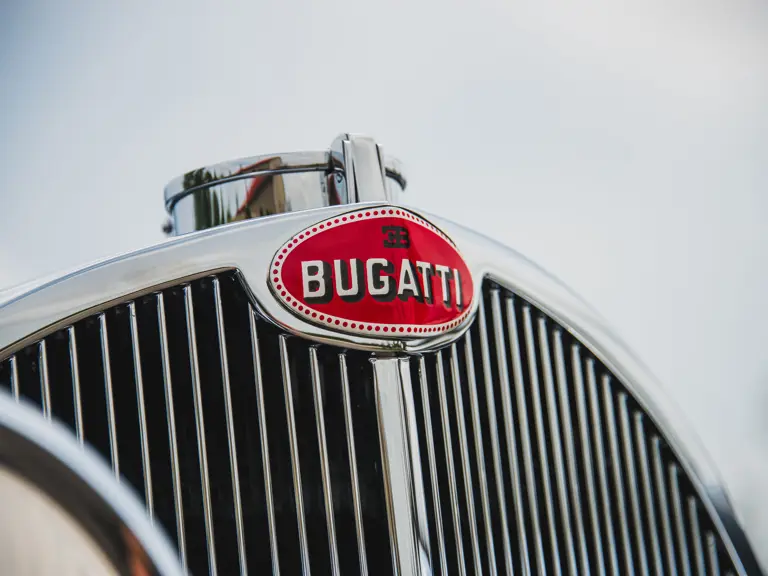
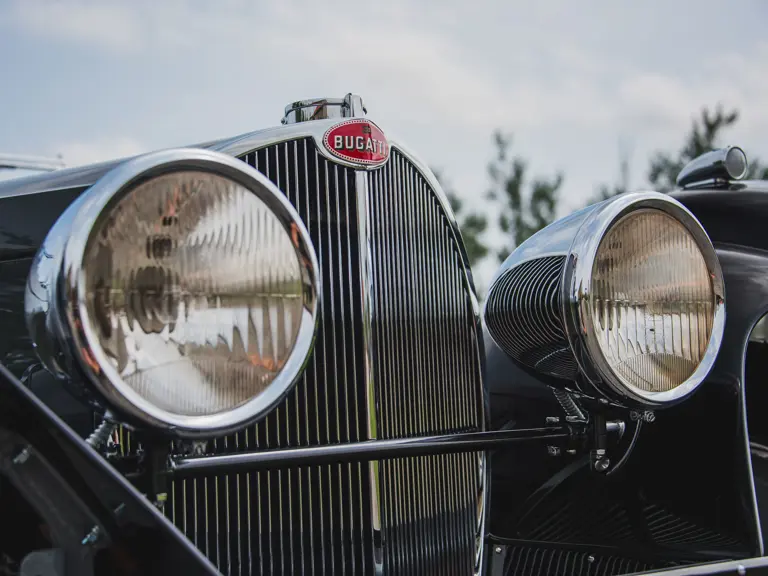
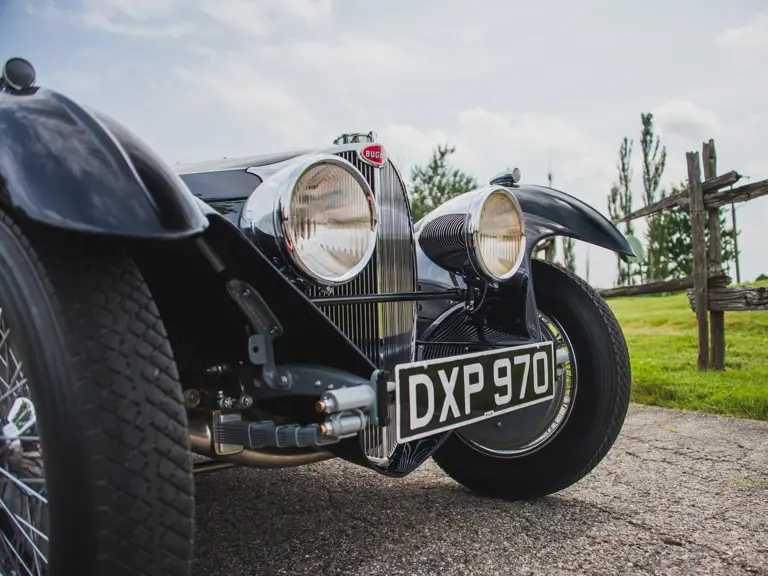

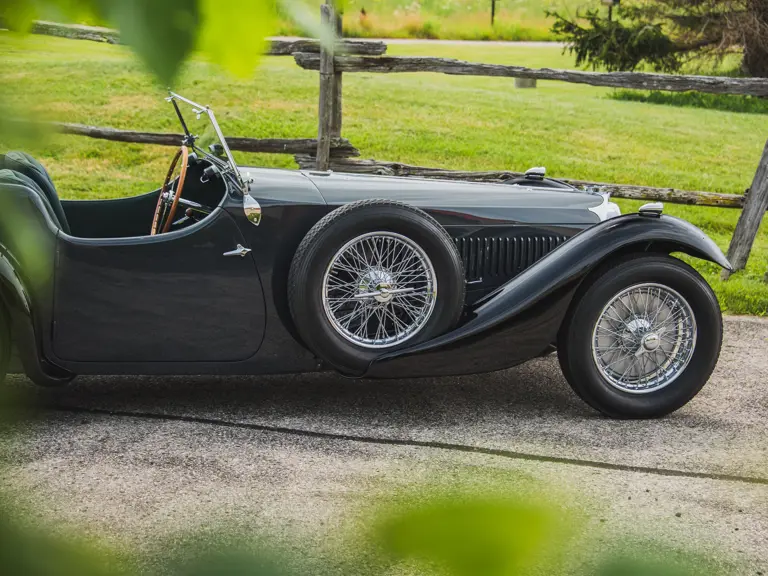

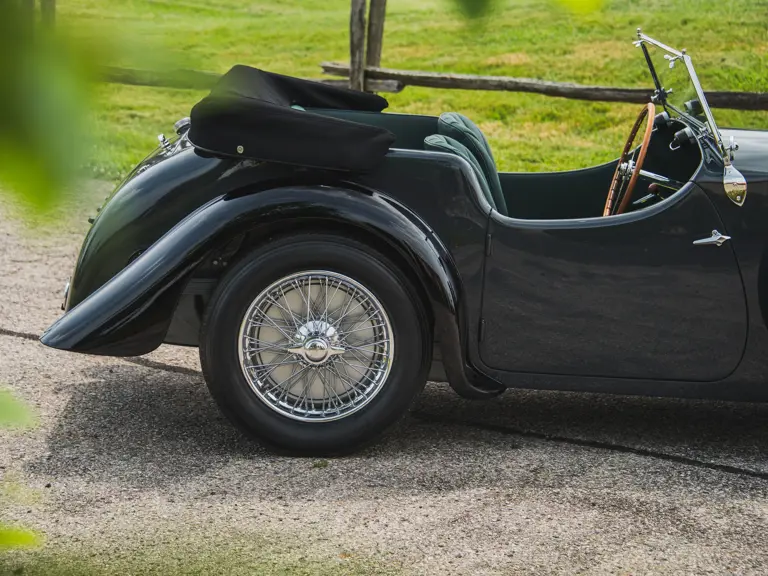
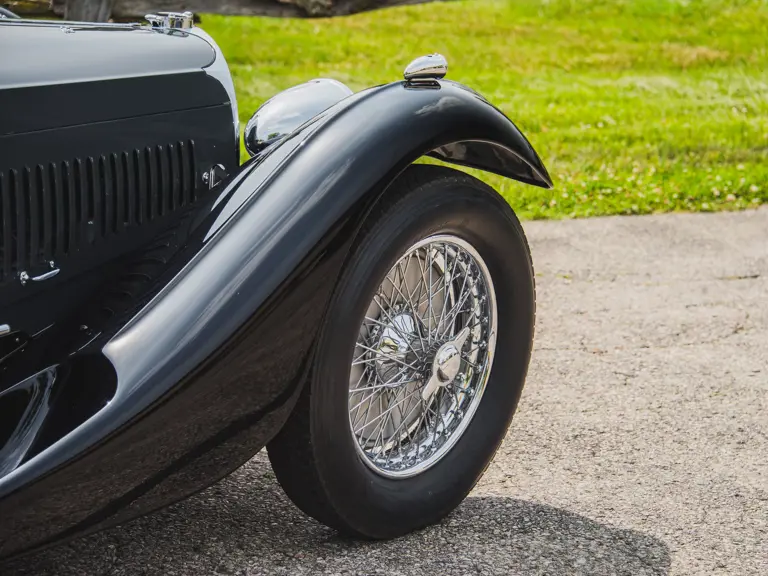



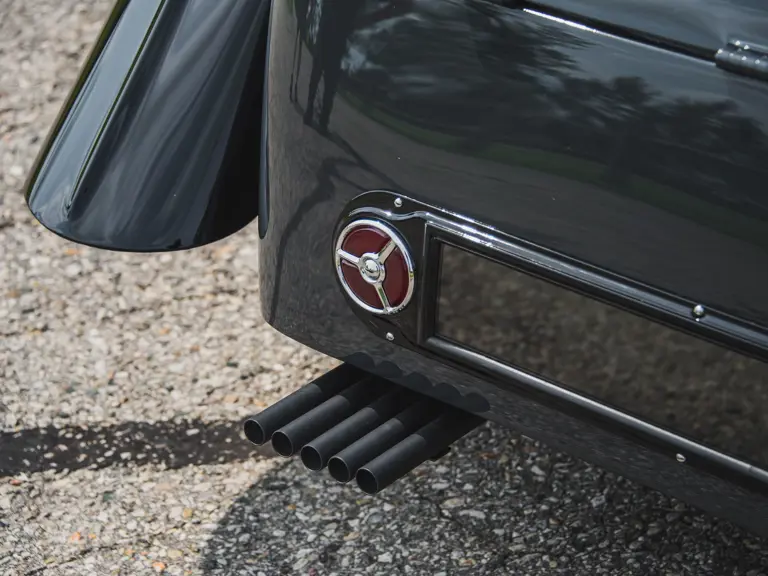




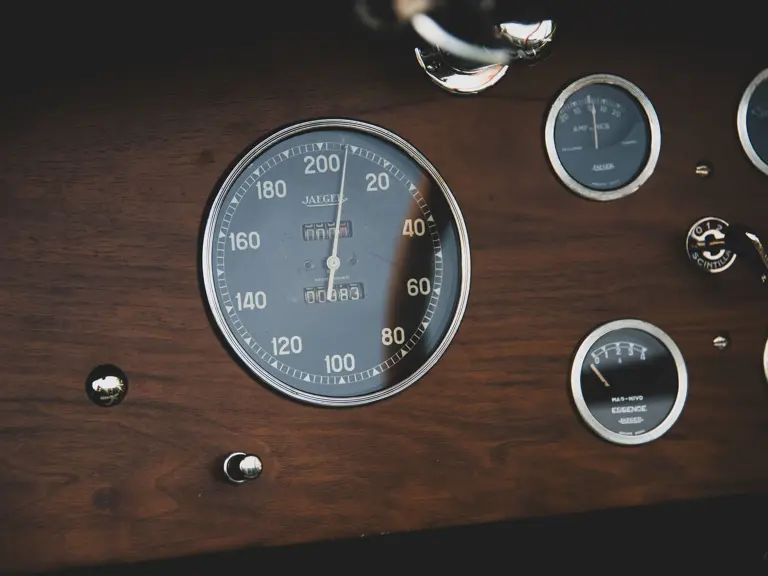
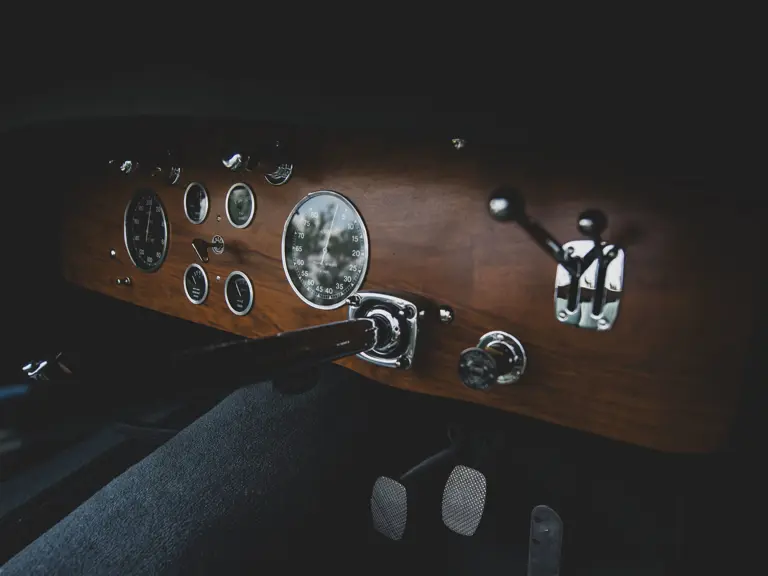


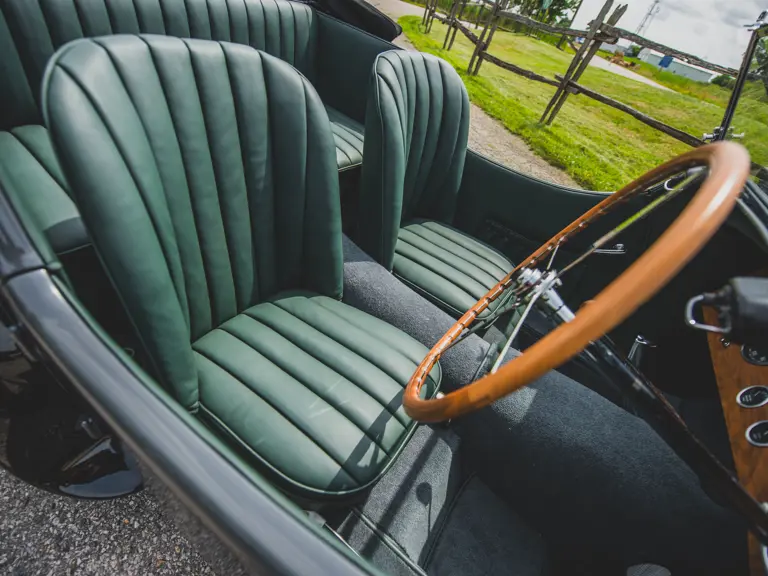

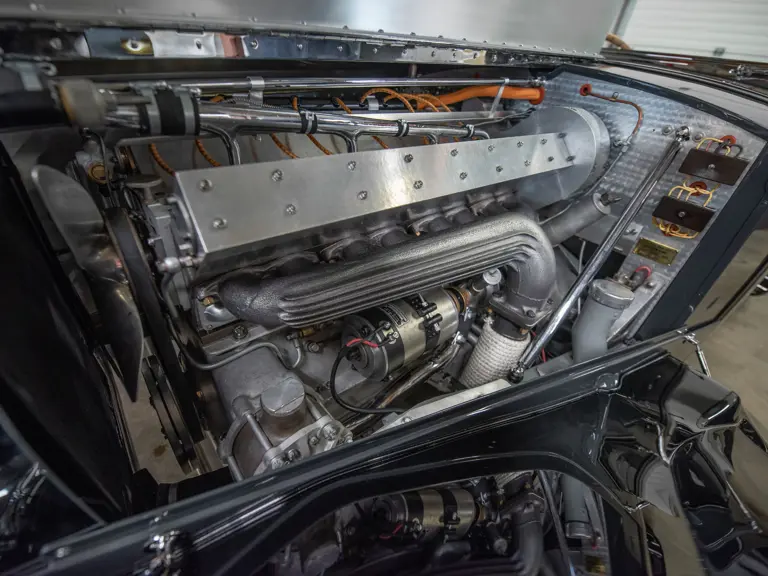
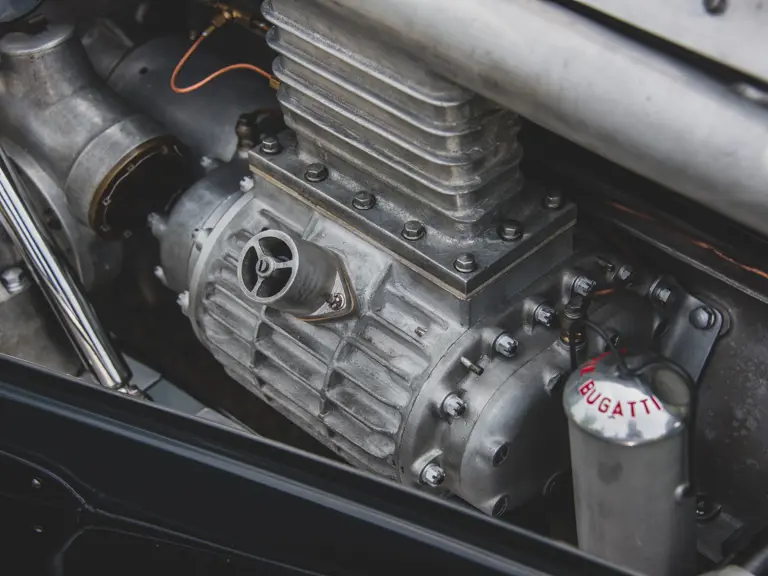
 | Monterey, California
| Monterey, California



